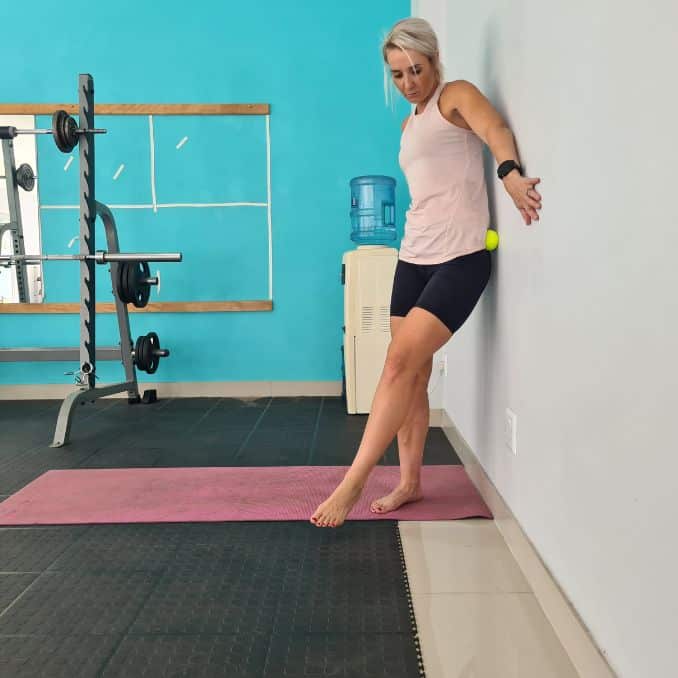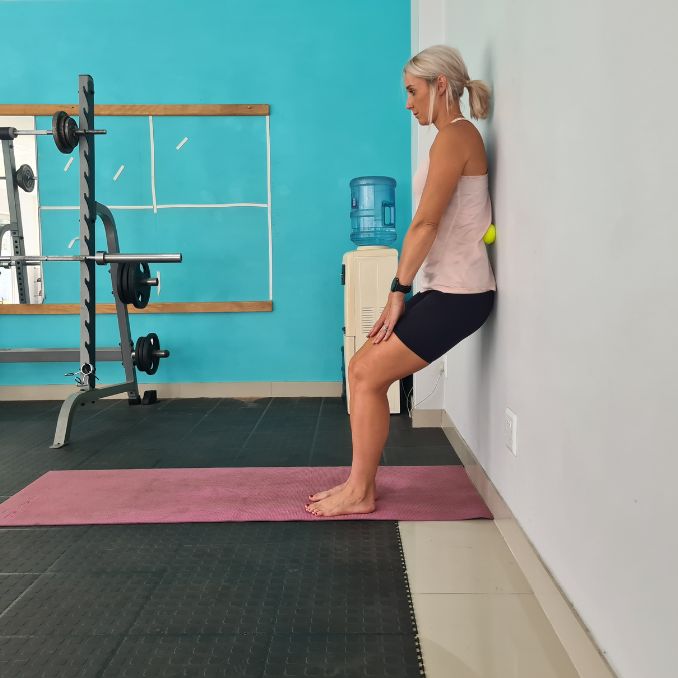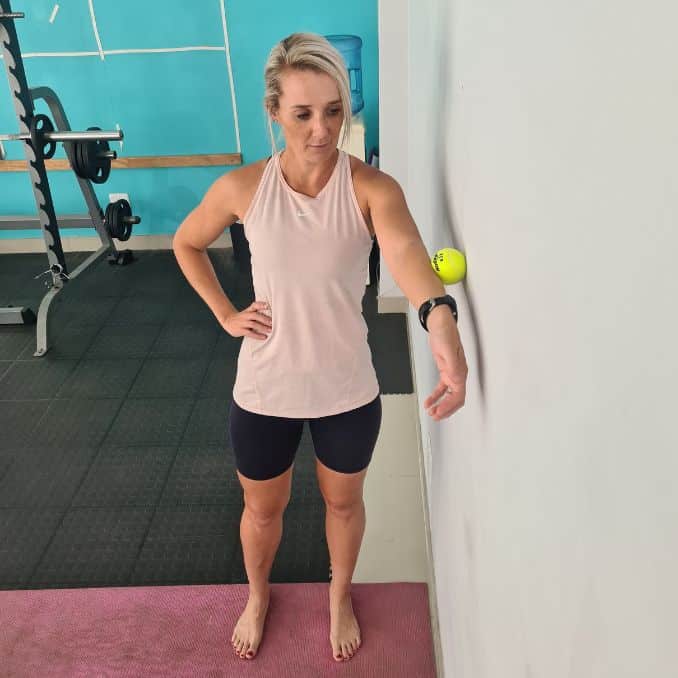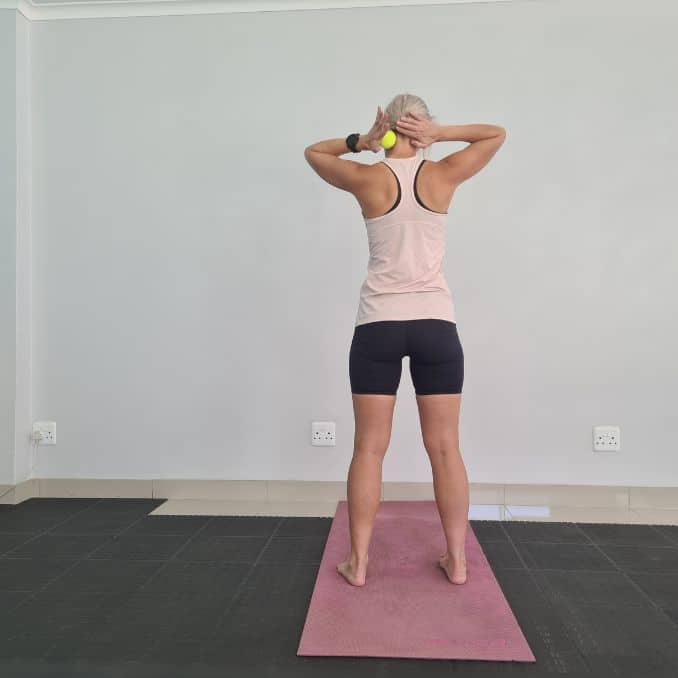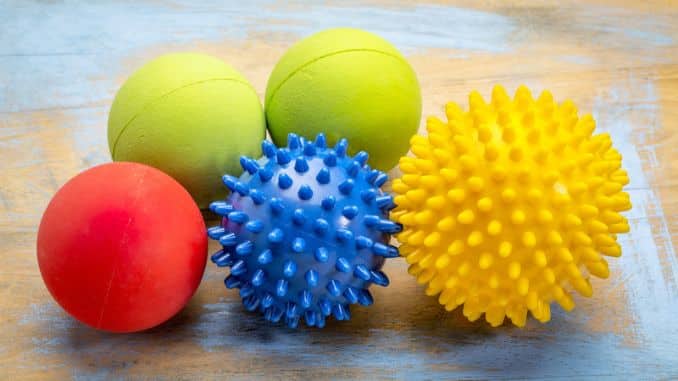
Trigger point massage balls have become increasingly popular in recent years as many people discover the benefits of using them in their daily routines. These handy tools are designed to help release tension and alleviate muscle pain in a convenient and effective way. But with so many different massage balls for exercises, knowing where to start can be crushing.
In this blog article, we’ll take a closer look at the basics of massage balls. Whether you’re new or looking to up your game, read on to learn more about this small, powerful tool for self-care.
Massage balls are considered innovative massage therapy tools. Massage balls for exercises allow for self-massage techniques, which offer several benefits, such as relieving joint and muscle pain, and other benefits including these:
- It can help to release tension and knots in your muscles, providing a deep tissue massage that can aid in muscle recovery after a workout or relieve discomfort from sitting or standing for long periods of time.
- Using a massage ball can also have mental health benefits. Using a massage ball during exercises can be relaxing and provide a sense of mindfulness as you focus on the sensations in your body and the pressure the ball applies.
- They can help ease carpal tunnel syndrome and reduce strain and tension in the body’s major muscles. They can also reduce muscle pain in the lower back.
Trigger Point Massage Balls
These balls are an affordable and effective way to relieve pain and muscle tension. They work by applying pressure to specific areas of the body, known as trigger points, often the source of joint and muscle pain, and discomfort. Several different kinds of trigger point massage balls for exercises are available in the market and each with unique features and benefits.
Here are a few examples:
1. Lacrosse balls
These are small, firm balls made of solid rubber that can target small, specific, and hard-to-reach areas of the body, such as the feet, hands, hips, back, and neck. A lacrosse ball offers more intense pressure than a foam massage ball and is great for deep tissue massage.
2. Spiky massage balls
These balls have small, firm spikes all over the surface that can help release tension and increase muscle circulation. These spikes also provide an extra level of acupressure, which can help to stimulate blood and oxygen flow and reduce tension. Spiky massage balls for exercises are also great for massaging the feet and hands and are commonly used for reflexology.
3. Peanut massage balls
These are shaped like peanuts and have two balls connected by a narrow piece in the middle. The peanut shape is designed to cradle the spine for a more targeted massage and avoid massaging the spine. They are great for alleviating back pain and tension and can also massage other body areas, such as the neck and hips.
4. Handheld massage balls
These are small balls that fit in the palm, targeting small muscles.
Aside from these massage balls, you can also utilize the following massage tools.
Typically larger and provide a larger surface area for massaging different body parts. They can target larger muscle groups, such as the legs and back.
-
-
Massage sticks
-
Good for hard-to-reach areas, such as hamstrings and glutes.
-
-
Mb1 massage ball or any foam massage ball
-
Provides direct deep tissue compression.
-
-
Muscle max massage ball
-
Provides more intense relief than some other massage balls or foam rollers.
-
-
Tennis ball
-
Provide intense relief like how the other massage ball works
How to use massage balls
Massage balls for exercises are an effective tool for self-massage and trigger point therapy. They are small, portable, and can be used almost anywhere on the body. Here are some ways you can use massage balls:
a. Foot massage
Place the ball under your foot and roll it back and forth. Apply pressure on any sore or tender spots.
b. Back massage
Lie on the floor or lean on a wall with the ball. Roll the ball up and down, applying pressure on any knots or trigger points.
c. Neck massage
Stand with your back against the wall and place the ball between your neck and the wall. Gently move your head up and down, side to side, and in circles to massage your neck muscles.
d. Hand massage
Place the ball on a table and roll your hand over it, applying pressure on any sore areas.
e. Glutes massage
Sit on the ball and roll it around your glutes. Apply pressure on any knots or tight muscles.
f. Leg massage
Lie on your side with the ball under your thigh. Roll the ball up and down your thigh, applying pressure on any tender points.
Incorporating massage balls into your self-care routine or exercises can be a valuable investment in your health. Here are some therapeutic ways to utilize your massage balls with Massage Ball 101!
Massage Ball Ball 101
Many people at home also use massage balls to massage the areas of their body that are particularly stiff or sore. Some people may use them to gently massage their sore muscles, while others may vigorously use them. It is essential to know what type of massage ball your exercises are using and how to use it correctly to prevent hurting yourself and avoid injury.
1. Sole Roll
Begin in an upright sitting position on the floor with your knees bent and feet flat on the floor, maintaining good alignment with your head, shoulders, and hips. Lean your back against the wall and hands at your sides for support. Step on the massage ball with one foot, then roll the ball from the arch of your foot to your toes and back. Locate any trigger points and roll the massage ball against the sore spots. Increase or decrease the pressure as needed. Repeat the movement on the opposite side.
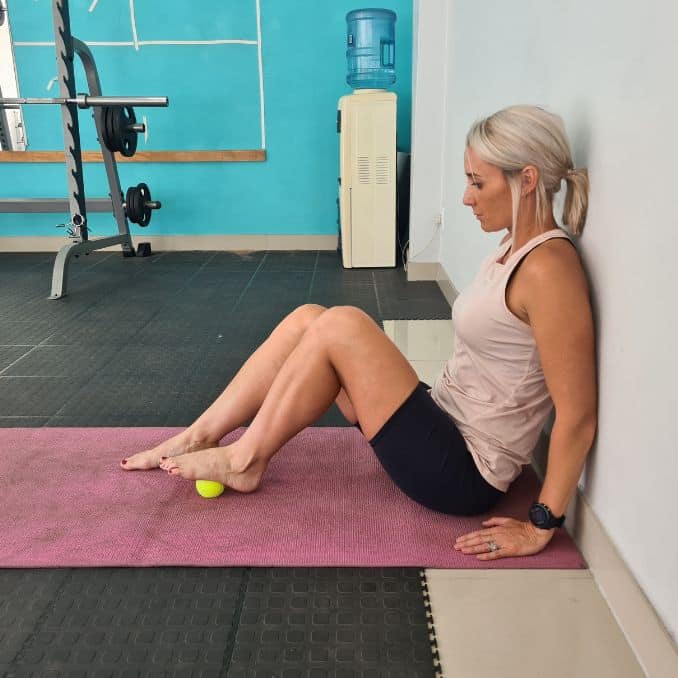 |
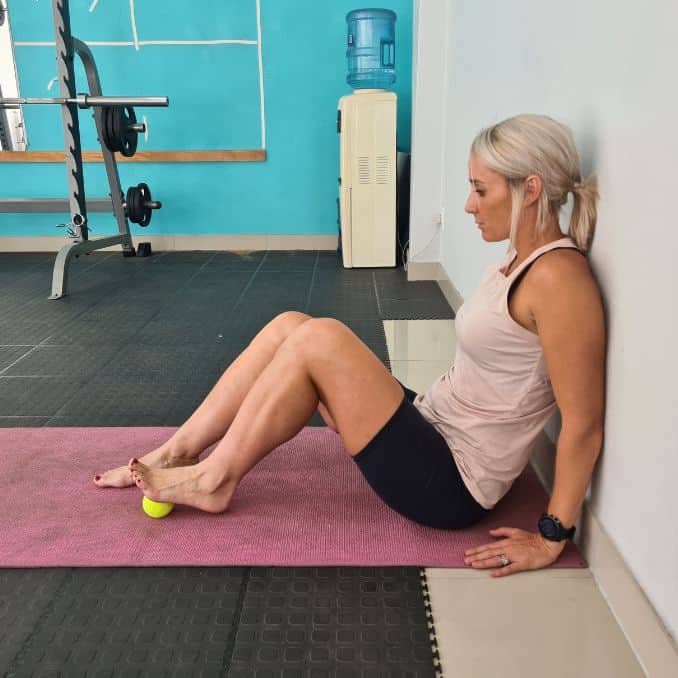 |
Sole Roll
2. Calf Roll
Begin in an upright sitting position on the floor with your feet flat on the floor, maintaining good alignment with your head, shoulders, and hips. Lean your upper back against the wall and hands at your sides for support. Extend one leg forward and place the massage ball under your mid-calf area. Engage your core and roll the trigger massage ball down to your lower calf and back to your mid-calf area. Locate any trigger point and roll the ball against the sore spots. Increase or decrease the pressure as needed. Repeat the movement on the opposite side.
 |
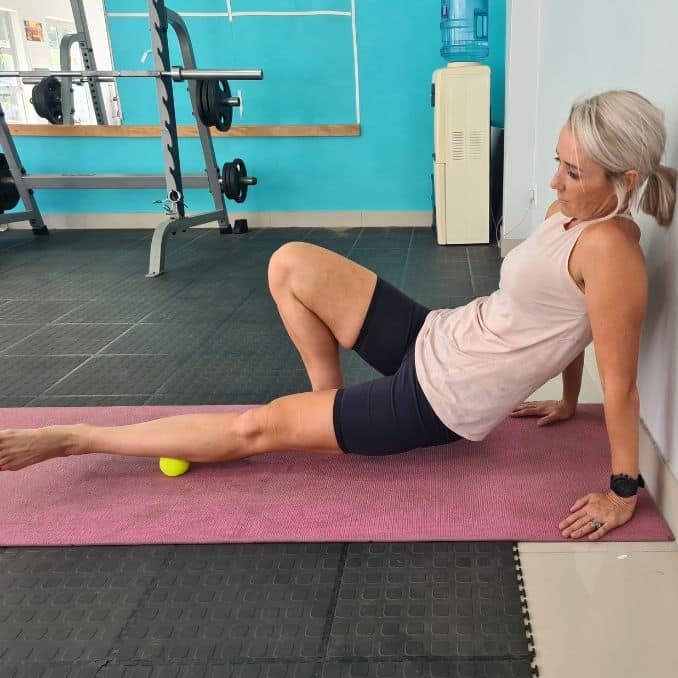 |
Calf Roll
3. Hamstring Roll
Begin in an upright sitting position on the floor with your knees bent and feet flat on the floor, maintaining good alignment with your head, shoulders, and hips. Lean your upper back against the wall and hands at your sides for support. Straighten one leg and place the trigger point massage ball under your hamstrings. Engage your core and roll your leg sideways, back, and forth. Increase or decrease the pressure as needed. Repeat the movement on the opposite side. Relax and raise back up to return to an upright standing position.
 |
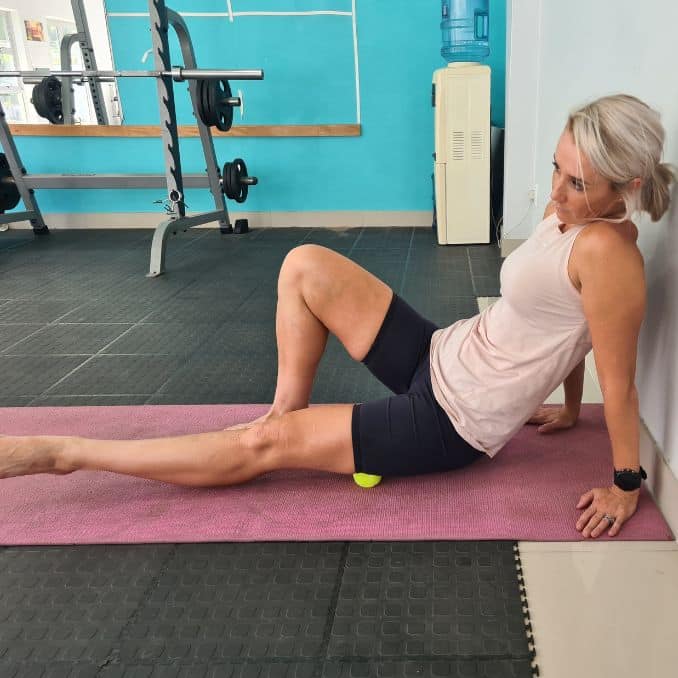 |
Hamstring Roll
4. Glute Roll
Begin in an upright standing position with your feet hip-width apart, maintaining good alignment with your head, shoulders, hips, and legs. Place the trigger point massage ball on your glute area and press it against the wall. Pressed your hands against the wall for support and shift your weight with your standing leg. Engage your core. Roll the ball up and down or sideways to find the sore spots. Increase or decrease the pressure as needed. Repeat the movement on the opposite side.
Glute Roll
5. Shoulder Back Roll
Begin in an upright standing position with your feet hip-width apart, maintaining good alignment with your head, shoulders, hips, and legs. Place the trigger point massage ball at your shoulder back and press it against the wall. Slightly lower your seat and engage your core. Move your body up and down, lowering your seat, to roll the ball. Increase or decrease the pressure as needed. Repeat the movement on the opposite side.
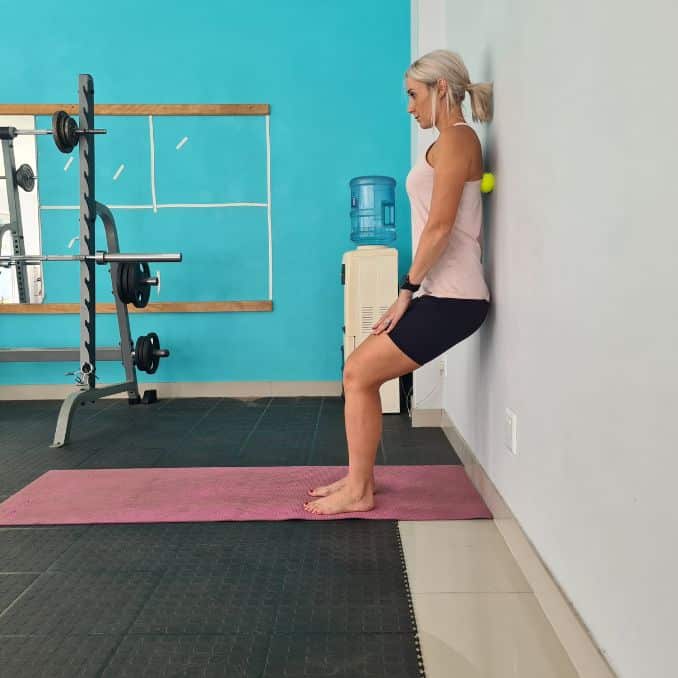 |
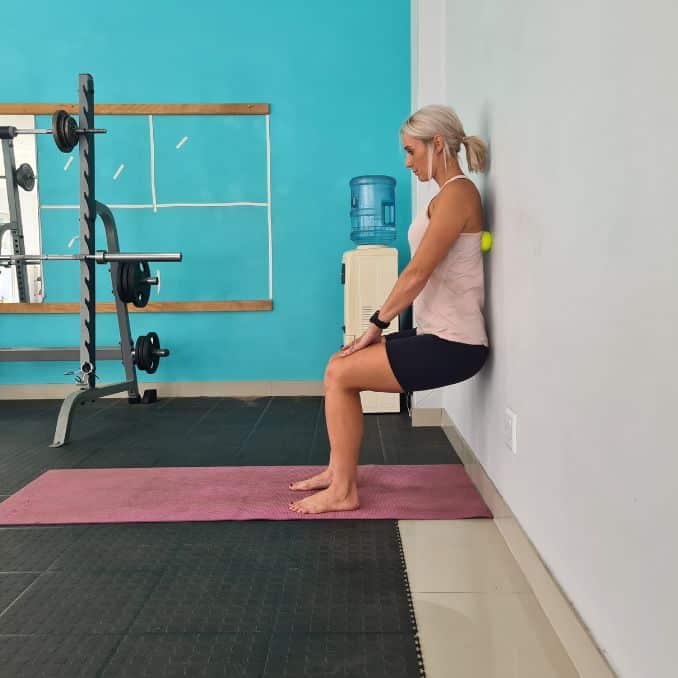 |
Shoulder Back Roll
6. Mid-Back Roll
Begin in an upright standing position with your feet hip-width apart, maintaining good alignment with your head, shoulders, hips, and legs. Keep your feet close together and slightly lower your seat with your hands on your thighs. Place the trigger point massage ball on your mid-back and press it against the wall, rolling it from side to side and then up and down. Increase or decrease the pressure as needed. Repeat the movement a few times.
Mid-Back Roll
7. Backside Shoulder Roll
Begin in an upright standing position with your feet hip-width apart, maintaining good alignment with your head, shoulders, hips, and legs. Place the massage ball at the back of your shoulder, press it against the wall, and slightly lower your seat. Cross one arm in front of your chest and hold the elbow with your opposite hand. Engage your core and roll your shoulder up and down against the ball. Increase or decrease the pressure as needed. Repeat the movement on the opposite shoulder.
 |
 |
Backside Shoulder Roll
8. Side Shoulder Roll
Begin in an upright standing position with your feet hip-width apart, maintaining good alignment with your head, shoulders, hips, and legs. Place the massage ball at the side of your shoulder and press it against the wall; as you lean to your side, move your feet away from the wall to increase the angle of your body. Engage your core and roll your arm up and down. Increase or decrease the pressure as needed. Repeat the movement on the opposite side.
 |
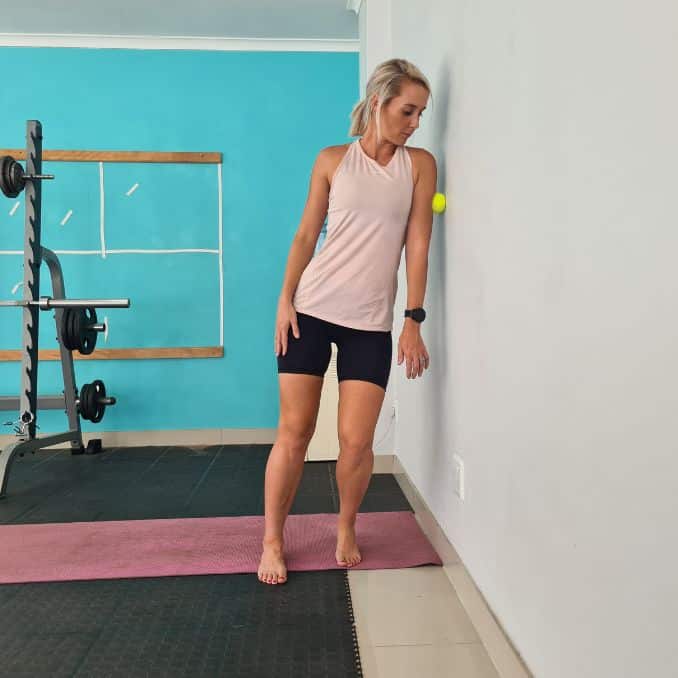 |
Side Shoulder Roll
9. Arm Roll
Begin in an upright standing position with your feet hip-width apart, maintaining good alignment with your head, shoulders, hips, and legs. Place the massage ball on the outer sides of your forearm and press it against the wall as you place your opposite hand on your hip. Engage your core and slowly roll your arm back and forth. Increase or decrease the pressure as needed. Repeat the movement on the opposite side.
Arm Roll
10. Palm Roll
Begin in an upright standing position with your feet hip-width apart, maintaining good alignment with your head, shoulders, hips, and legs. Place the massage ball on your palm and press it down with your other palm. Engage your core. Roll the ball between your hands, and increase or decrease the pressure as needed. Repeat the movement.
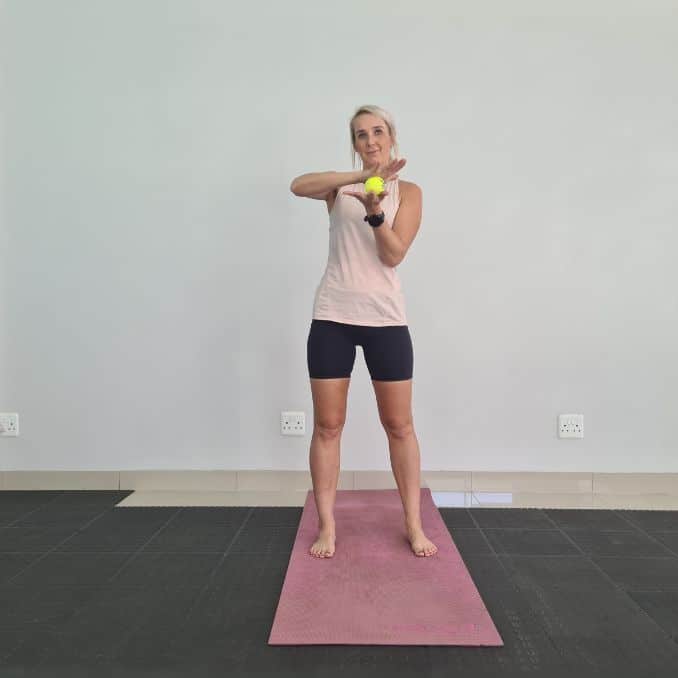 |
 |
Palm Roll
11. Neck Roll
Begin in an upright standing position with your feet hip-width apart, maintaining good alignment with your head, shoulders, hips, and legs. Engage your core. Roll the ball to the sides of your neck or from the base of your skull down to your shoulders. Increase or decrease the pressure as needed. Repeat the movement on the opposite side.
Neck Roll
Warnings and precautions
When using a massage ball, it is important to be aware of certain warnings and precautions to avoid any potential injury or discomfort. Here are some areas of the body where you should exercise caution when using a massage ball:
1. Spine
The spine is a delicate area, and using a massage ball too aggressively can cause back pain or even spinal damage. It is recommended to avoid using a massage ball directly on the spine. Instead, focus on the muscles surrounding the spine, such as the erector spinal muscles. It is advisable to use peanut massage balls to prevent massaging the spine.
2. Joints
When using a massage ball on joints, such as the knees, it is important to avoid putting too much pressure on these areas. This can cause discomfort or even damage the joint. Instead, focus on the muscles that surround the joint, such as the quadriceps and hamstrings.
3. Neck
It is recommended to avoid using a massage ball directly on the cervical spine. Instead, focus on the muscles in the neck, such as the trapezius muscles.
4. Bony areas
Avoid using a massage ball on bony areas such as the shins or elbows, as this can cause discomfort or even bruising.
Injuries or medical conditions
Suppose you have injuries or medical conditions, consulting with a healthcare professional before using a massage ball is recommended. Massaging an injured or inflamed area can exacerbate the condition.
Additional benefits of using a massage ball
a. Improved circulation and flexibility
When the massage ball is applied to a specific area of the body, it helps to stimulate blood and oxygen flow to that area. This is because the pressure from the ball helps to dilate the blood vessels, allowing more blood to flow through.
Massage balls can also help improve flexibility by helping to release tension in the muscles. When muscles are tight and tense, they can become shortened and stiff, making it difficult to move them through their full range of motion. Applying pressure to these areas with a massage ball can help to release tension and muscle fatigue, allowing them to move more freely.
b. Decreased muscle soreness and tension
The reason behind this is that they help to release trigger points in the muscles, which are small knots that form when the muscle fibers become tight and contracted. Trigger points can cause pain, stiffness, and reduced range of motion. When you apply pressure to a trigger point with a massage ball, it helps to deactivate it and release the tension in the muscle.
c. Increased relaxation and stress relief
When tension builds up in the muscles, especially in the larger muscle groups, it can lead to stress and discomfort throughout the body. This tension can also cause tightness and joint and muscle pain in different parts of the body, such as the neck, shoulders, back, and legs. Using massage balls to apply pressure to these areas can help alleviate this tension and promote relaxation. Massage balls work by compressing the muscles, which helps increase blood flow and circulation throughout the body. This increased blood flow can help nourish the muscles and tissues, which can promote relaxation and reduce stress. Using massage balls can also help stimulate the release of endorphins, which are natural mood-boosting chemicals in the body. Endorphins can help reduce pain and promote feelings of relaxation and well-being.
Conclusion
Massage balls are great for providing massage therapy and releasing tension in different parts of the body and stimulating blood flow resulting in an increase of oxygen flow in those tight areas. They are easy to transport and use; they can be rolled under the legs or across the back when needed. While most massage balls are designed to help relieve muscle tension and soreness, they can also be used to stimulate the skin and promote circulation.
Regardless of whether you need to get rid of tension or break a plateau, a massage ball is a handy tool to have in your therapeutic toolkit. These little balls come in a variety of shapes and sizes, and each type is designed to provide different benefits. While many people have heard of them, few have actually used them more than once or twice. That’s quite surprising because these little “medicine balls” can do wonders. Try it now and maximize the experience of this small therapeutic tool.

